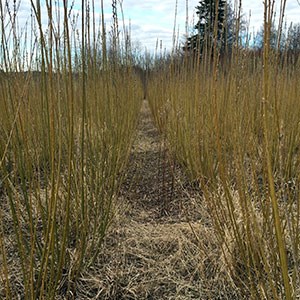Contact
Anke Herrmann
Researcher at the Department of Soil and Environment, SLU
Telephone: 018-671561, 076-8588982
E-mail: anke.herrmann@slu.se

In this project we will evaluate whether shifts in root inputs, rhizodeposition and recycling of bi- products result in changes in resource efficiency of microbial communities in soils.
Little is known about how carbon rich waste products from various bio-refinery processes returned to the soil can affect below-ground processes such as terrestrial carbon cycling. Carbon sequestration is one of the ecosystem services of great and public concern in relation to climate change and maintenance of soil fertility. Increases in plant diversity have been shown to result in an increase in C storage in grassland soils.
The underlying mechanisms through which crop diversity may increase C storage are not clearly understood. Specifically, very little is known on the potential effects of Salix varieties and their waste products to below-ground C cycling.
It is hypothesized that with increasing plant trait diversity, less energy will be dissipated during decomposition of organic material. Thus, microbial resource efficiency increases with higher plant trait diversity, and therefore microbial community composition is a good proxy for efficiencies. Such changes in resource efficiencies will have significant effects on carbon cycling.
Researcher at the Department of Soil and Environment, SLU
Telephone: 018-671561, 076-8588982
E-mail: anke.herrmann@slu.se